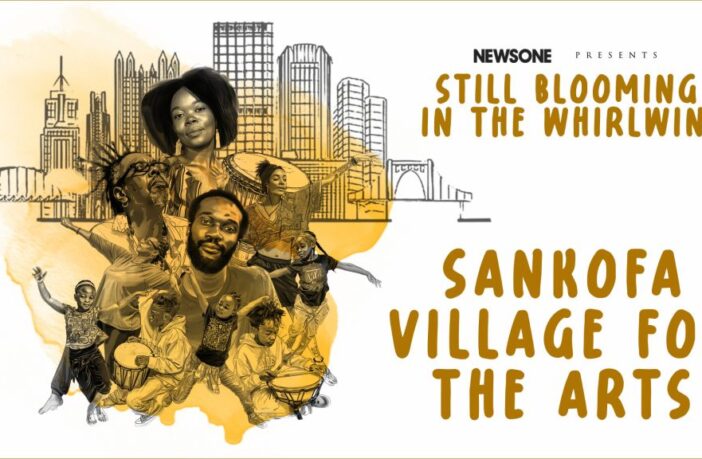Source: iOne Digital Creative Services
On a recent Saturday in May, a daylong African drum and dance gathering in Pittsburgh had 10-year-old Peyton Russell feeling the pulse. After catching the rhythm, he glided over to a nearby djembe drum and started banging. The elder standing next to him guided his hands, helping the young boy catch the tempo.
As he pounded the drum, Peyton was connecting to a practice almost as old as time.
NewsOne Presents Still Blooming In The Whirlwind: Pittsburgh As A Black Cultural And Artistic Mecca
The djembe, a chalice-shaped drum, is considered one of the most versatile and widely used percussion instruments in the world.
“I’m thankful every day, this is my sanctuary.”
Every time he banged the drum, Peyton, who is nicknamed “Mr. President,” was connecting his American present to his African past. The djembe – whose name means “gather in peace “ – traces its roots to the Madinke people in 12th-century Mali, West Africa. It is an instrument that has been played by West Africans for generations, becoming embedded in rituals not only in Mali, but Guinea, Senegal, and other West African countries.
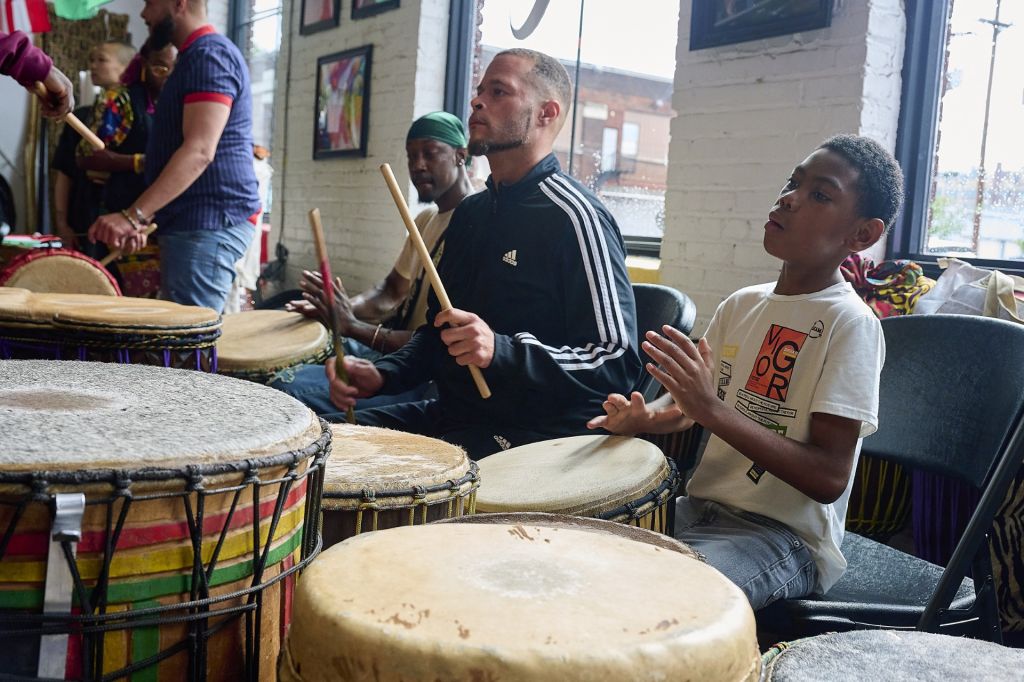
Peyton Russell at Sankofa Village for the Arts. | Source: Clyde Harris
Peyton is bridging time and tradition with his playing, a key goal of Sankofa Village for the Arts, the 13-year-old music, cultural, and youth development program housed on two floors of a former furniture factory in the Point Breeze neighborhood of Pittsburgh.
The nonprofit draws its name and mission from Sankofa, the West African philosophy that sprang from the Akan people of Ghana. Usually illustrated as a bird flying forward, but looking back, its chief idea is that you take what is good from the past and use that knowledge to create a positive path forward. In other words, the past informs the present.
Sankofa Village for the Arts was founded by Shabaka Perkins. The soft-spoken executive director is a cancer survivor and community-minded soul whose graying dreadlocks flow down his back. He has a passion for uplifting youth through African-centered arts and culture, and the drumming, dance, and martial arts classes at Sankofa Village are designed to preserve and highlight the cultural contributions of Africans and African Americans.
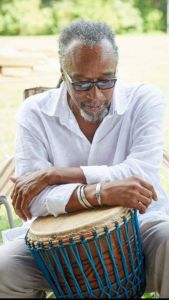
Shabaka Perkins. | Source: Sankofa Village of the Arts
Now, thanks to a 2023 “Advancing Black Arts in Pittsburgh” grant, which will be used to support Sankofa Village through 2025, the organization has the opportunity to develop and strengthen its youth programming.
It is the kind of “security” that helps Sankofa Village move forward, says Shabaka, explaining that the funding will pay for conference support, drums, costumes, and other measures to benefit the youth.
Young “Mr. President” wasn’t the only one connecting to the past last month. He joined hundreds of children, parents and supporters at the Sankofa Village Next Generation Conference, a vibrant celebration of Africa. Throughout the day, there was dancing and drumming representing the cultures of Kenya, Mali, Ivory Coast, and Guinea – a breath of traditions and music as broad as the Continent.
It’s the culture.
The second annual conference is the brainchild of Shabaka’s granddaughter, Toddja Thornhill, who serves as Sankofa Village’s artistic director. She’s now in her early 20s, but as a young girl, her grandfather brought her to the African drumming and dance lessons. She was immediately enraptured and, at age 10, began teaching African dance at Sankofa Village. Thornhill thought the conference would be a great way to introduce youth to African history and ways of life, as well as all that Sankofa Village offers.
“Cultural knowledge and learning about the continent of Africa are good for our mental health,” says Thornhill. “I’ve been coming for years, and I know that the arts can take you far.”
Thornhill’s participation with Sankofa Village has not only given her a broad perspective of African contributions and philosophies but also stamps in her passport. Her dance training and development have taken her to Guinea and Senegal in West Africa and to Jamaica in the Caribbean.
She’s proudly following in her grandfather’s footsteps.
Shabaka, who recently turned 75, was born Moses Perkins. And though he grew up in New Brighton, a majority white, small town about 30 miles from Pittsburgh, he was exposed to African culture and ideas at an early age. This happened because Asbury Morgan, his great-great-grandfather who was born into slavery, brought remnants of African culture with him from the South and passed it on to his family. In addition, his mother once dated an immigrant from Kenya. These encounters made Perkins curious about African stories and philosophies such as Sankofa.
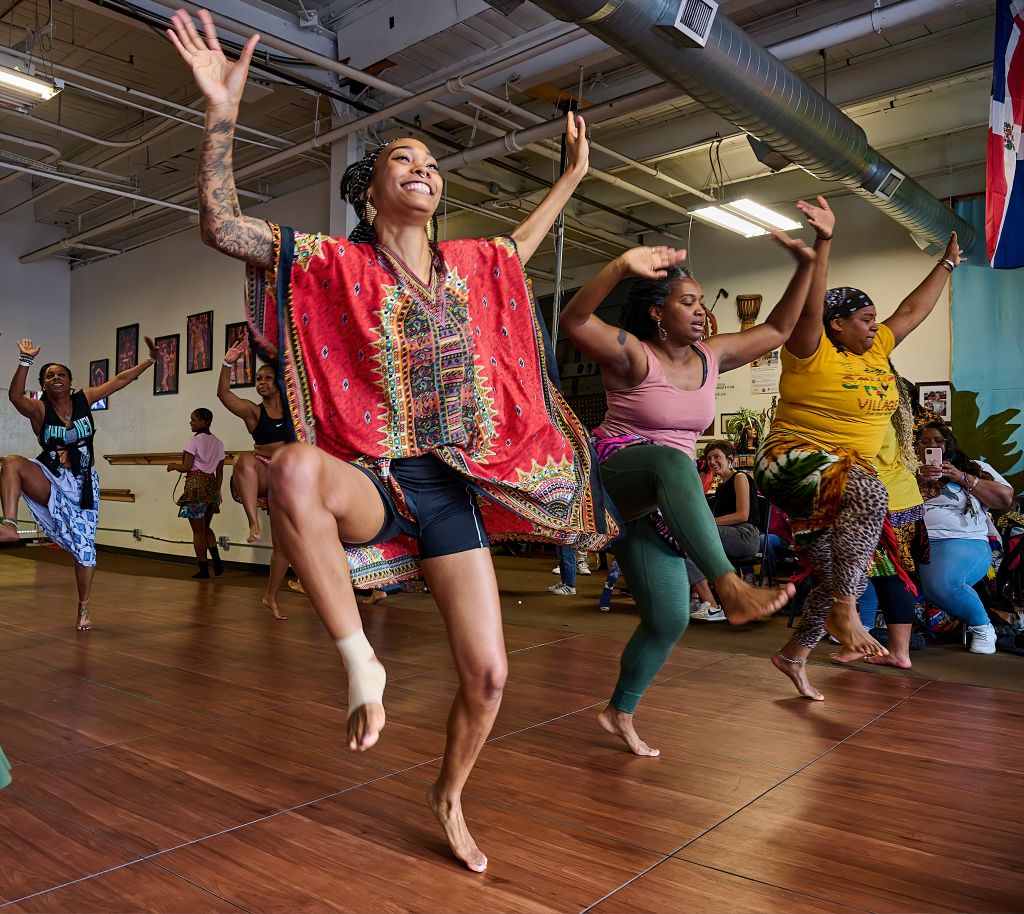
Source: A dance class at Sankofa Village for the Arts. | Clyde Harris
After high school, he left New Brighton to find his own way, initially working in construction in Ocean City, Maryland, and Rochester, New York. He returned to Pittsburgh in 1977 and found jobs in construction before eventually landing a position as a driver with the Port Authority.
When Perkins wasn’t working, he was mentoring youth and staying connected to African culture.
Though he had an affinity for drumming, he didn’t become serious about pursuing it until he was 40 years old. His commitment deepened when, during a visit to Wilkinsburg’s Wood Street Emporium, a local arts and merchandise store, he met a drummer who introduced him to the djembe. Once he touched it, Perkins was hooked.
“I fell in love with it,” he says, recalling that practicing stirred his memories of when he was a young boy drumming on his grandmother’s pots and pans.
As he developed his skills, he started playing at funerals and weddings.
His growing awareness of Africa inspired a name change. In 1995, Moses Perkins became Shabaka. The name comes from an Egyptian pharaoh who unified upper and lower Egypt. While it has various meanings, he prefers “divine soul.”
“It’s just so valuable for our kids.”
Perkins’ first teacher was a drummer from Senegal named Yonso Lon. And his first trip to Africa, a 2002 visit to Senegal, was inspired by Lon when Perkins was 53.
The more Perkins learned about the craft of drumming, the more he also learned about history. “Drumming is a language,” he says. “African people come from an oral tradition, and they did not write musical notes, so they played the drums to mimic the way they talked. Music was a language,” he says. “And I spoke the language.”
When enslaved Africans were brought to the New World, he continues, they “spoke” through the drums. “Drums were one of the first things outlawed for fear they would use [them]to spark resistance.”
A few years after the trip to Senegal, Perkins had a vision while sitting in the Image Art Gallery in Homewood. It was to build a program of classes and instructions that would teach and pass on African culture. That vision led to Sankofa Village for the Arts, founded in 2011, by Perkins, Darrell D. Baldwin and Arnell (Abdul) Glover. (Baldwin and Glover, both experts in various forms of martial arts, head up Sankofa’s martial arts instruction.) Since then, Sankofa Village has rapidly emerged as a regional center for African-centered cultural programming.
Not long after the founding of Sankofa Village, Perkins continued his personal exploration of Africa. In 2013, he went to Ghana, making a two-week pilgrimage with a group that took 13 young men for a rite-of-passage experience. The focus on personal relationships and the sense of spirituality that he found there “humbled” Perkins, who vowed to re-create these elements as much as possible with Sankofa Village.
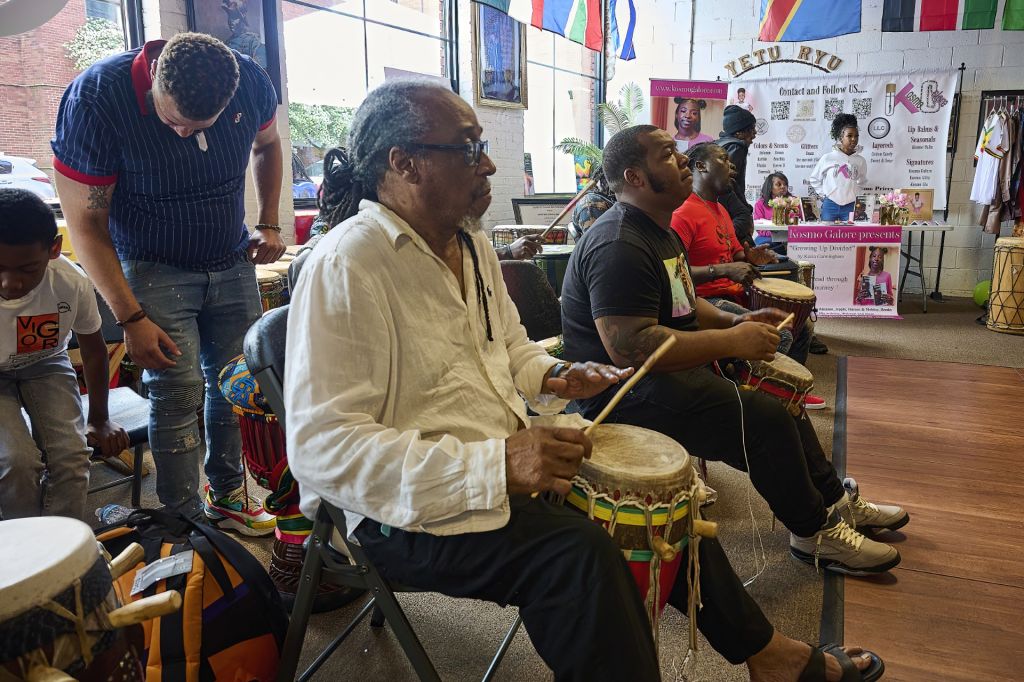
Shabaka Perkins is pictured in the foreground. | Source: Clyde Harris
Today, Sankofa Village has two dozen dance students, 40 martial artists in training, and 10 drumming students, the youngest of whom is 5 years old. The drum and dance classes are held twice a week, and the martial arts students take lessons three days a week. The classes are affordable and “we don’t turn anyone away,” he says.
When students arrive, they enter a space where there are wide rooms and a bright kaleidoscope of African images, famous quotes from Africans and Black Americans are painted on the walls, and drums and replicas of Sankofa birds are everywhere. Here, the Sankofa Village instructors and mentors are guided by the motto of care, commitment and consistency.
“I’m thankful every day, this is my sanctuary,” says Perkins of the institution he’s built.
Tamara Harris, a parent from Swissvale, is thankful, too. Her daughter, 8-year-old Harper, has been coming to Sankofa Village for a year. Though Harris lives nearby, she found Sankofa Village on Google after searching online for African cultural opportunities for Harper.
“Cultural knowledge and learning about the continent of Africa are good for our mental health.”
Harper, in her bare feet and a black T-shirt with a rainbow heart, is on the floor at the Next Generation Conference performing a dance from Mali with about 11 other young girls. She’s beaming.
“Harper loves dance,” says Harris. “Performance is her thing. But what I like about this place is she’s also being mentored; she’s being exposed to culture. She’s going to grow up and know about where she comes from.”
“It’s the culture. It’s the culture. It’s the culture,” says Renee Wilson, a community advocate and longtime supporter, standing inside the Next Generation Conference.
“I love the dance, the music and the exploration of Africa. I appreciate that they try to give the youth so much,” says Wilson, who works with Sankofa Village to bring performances to the Hill District neighborhood where she lives. “It’s just so valuable for our kids.”
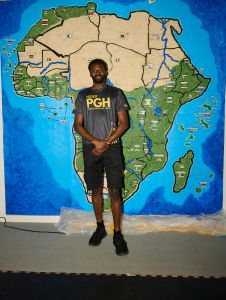
Toddja Thornhill, Artistic Director at Sankofa Village for the Arts. | Source: Clyde Harris
For the truest example of how the Sankofa philosophy is embodied in those who attend the arts center, there is Derych Benton. Now 29, he first came to Sankofa Village when he was 17. His mother, a local artist, sent him because she was drawn to the sense of community it might offer her son.
Benton is now an elementary school teacher and mentor. When he first arrived at Sankofa Village, he felt a sense of family and knew he wanted to plant himself there and give back.
With third-degree skills in jujitsu and other combat arts, he became one of the instructors of the martial arts academy at Sankofa Village.
“When I work with the students, my goals are to use martial arts for character development and protection,” he says. “I feel community here. Sankofa Village was part of my upbringing. My mom saw that there were tools here, and now I see the impact we’re passing on to others.”
Ervin Dyer is a writer who focuses his storytelling on Africana life and culture.
SEE ALSO:
DS Kinsel And Boom Concepts Art Gallery Are Amplifying Pittsburgh’s Hustle And Grind Culture
Filmmaker Gregory Scott Williams Jr. Is Centering Those Who Choose Not To Protest
10 photos
